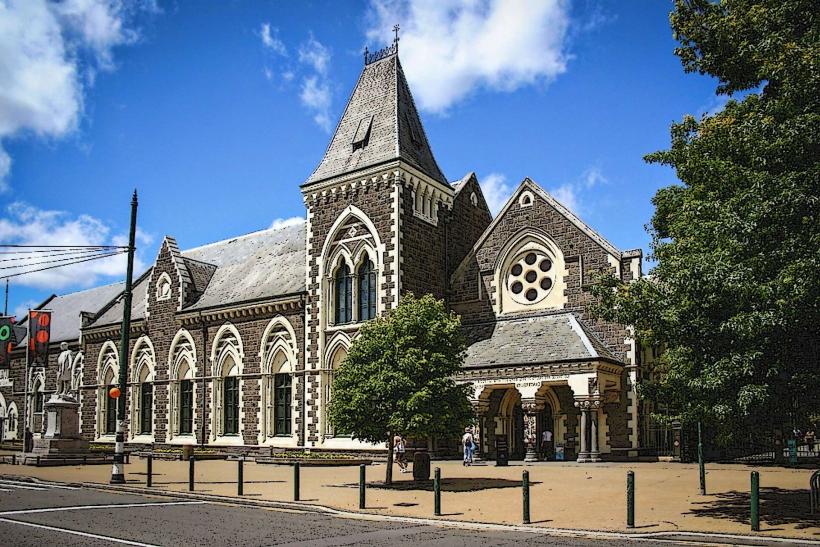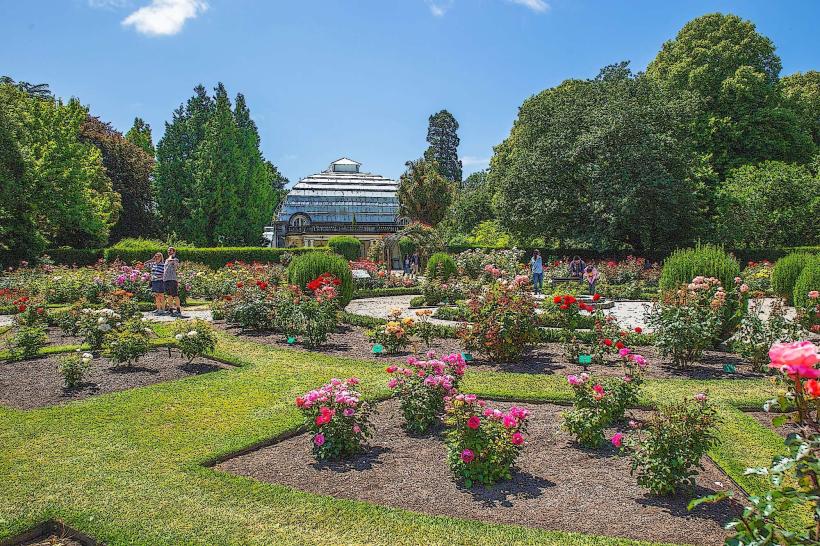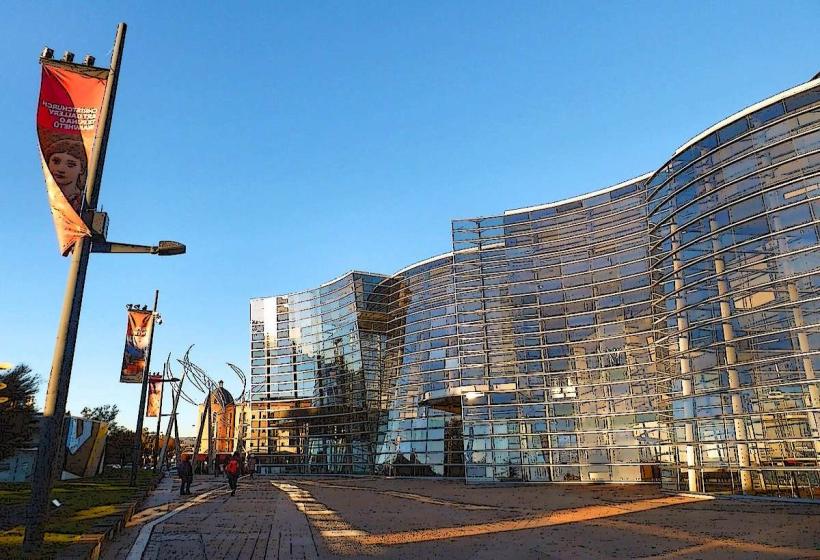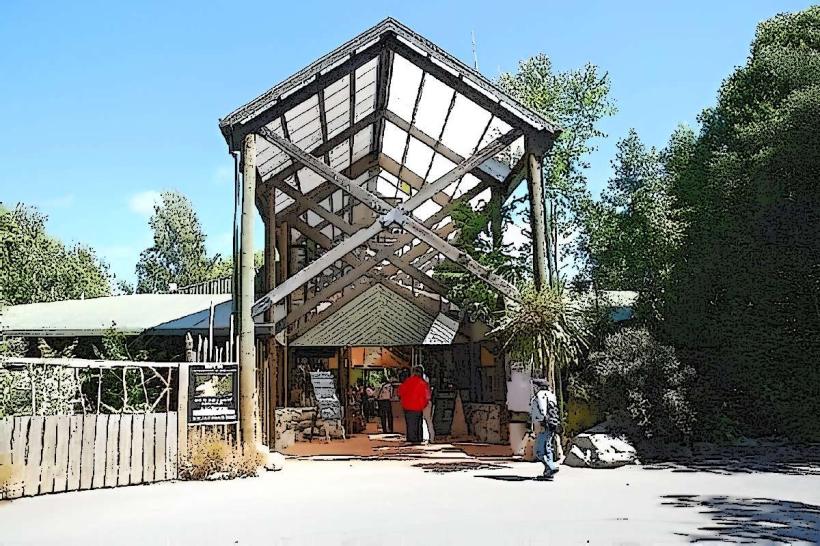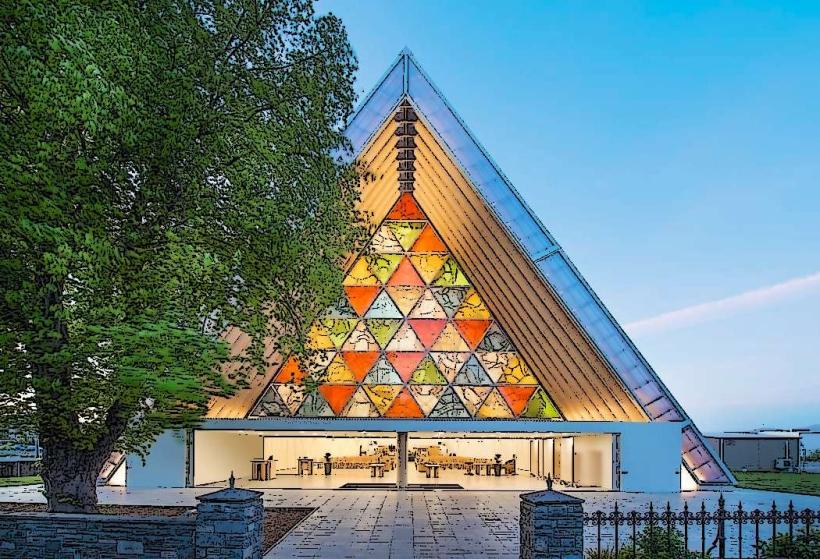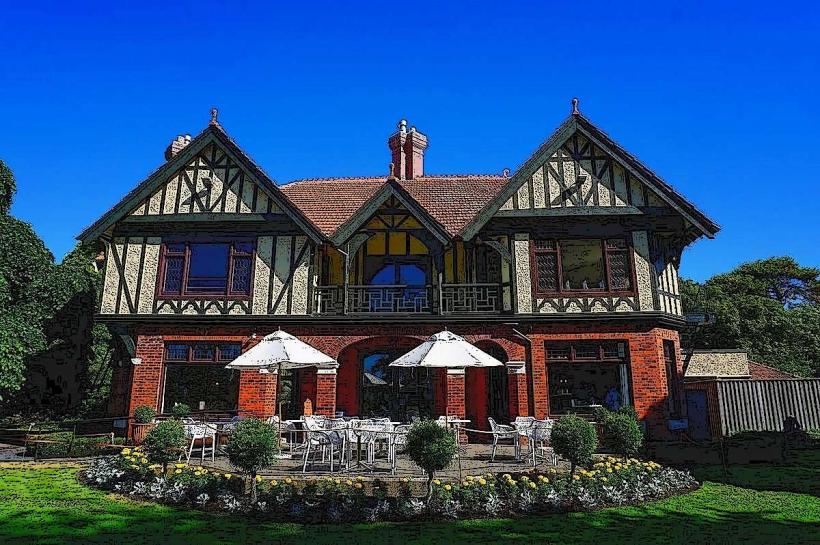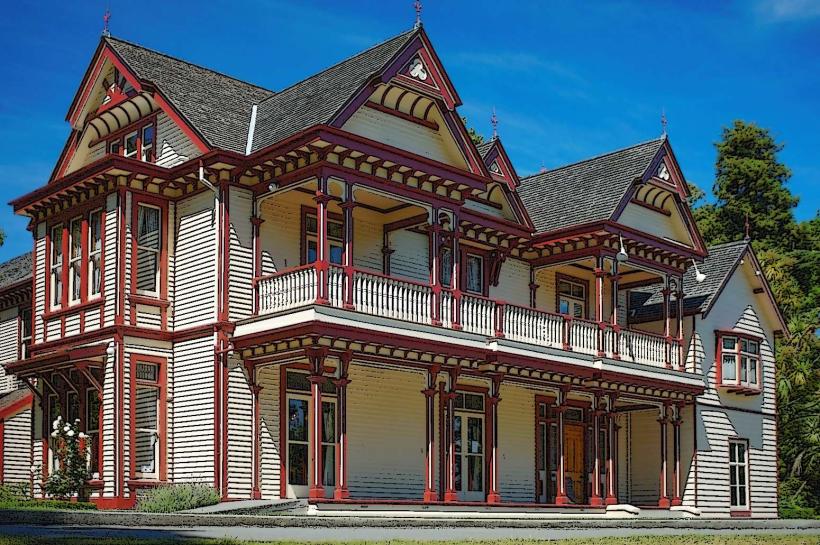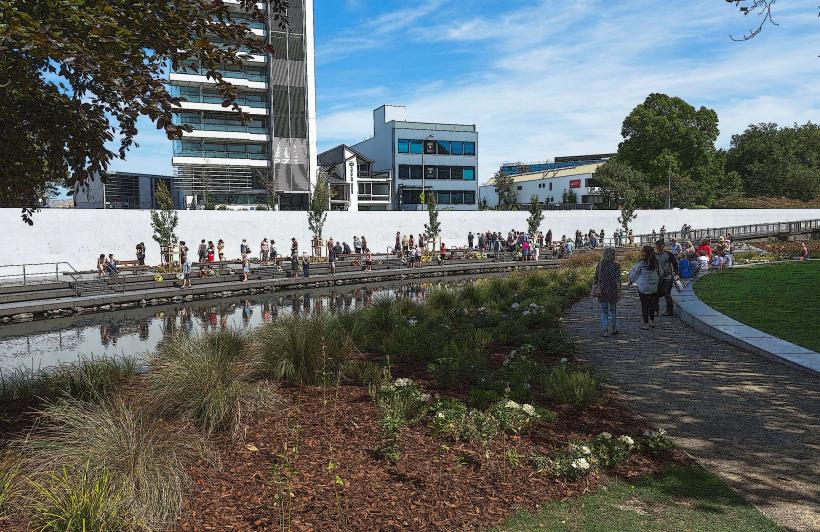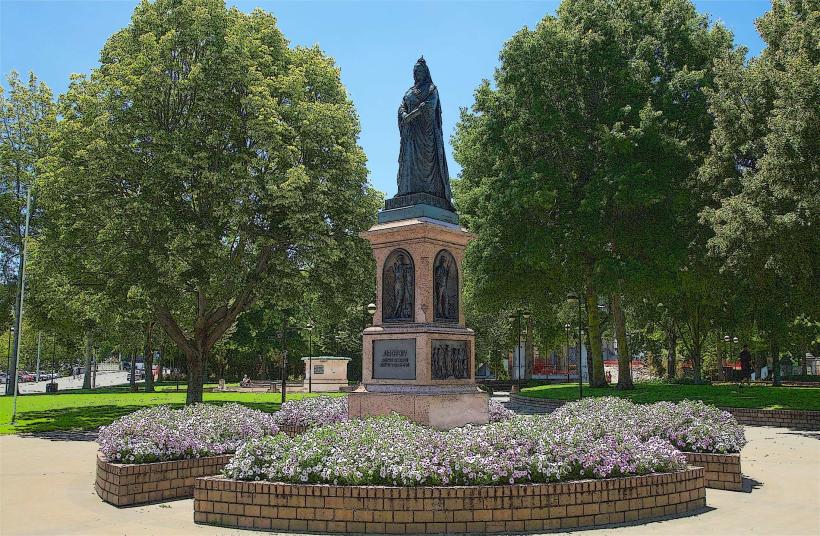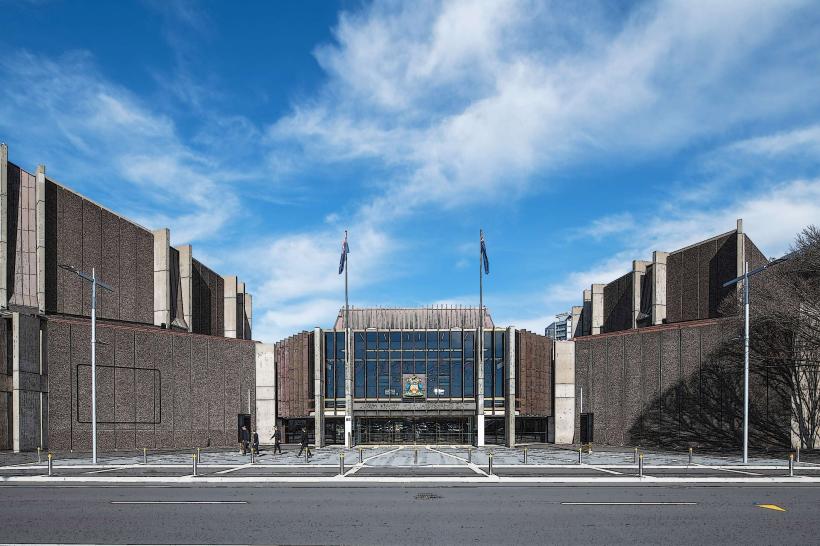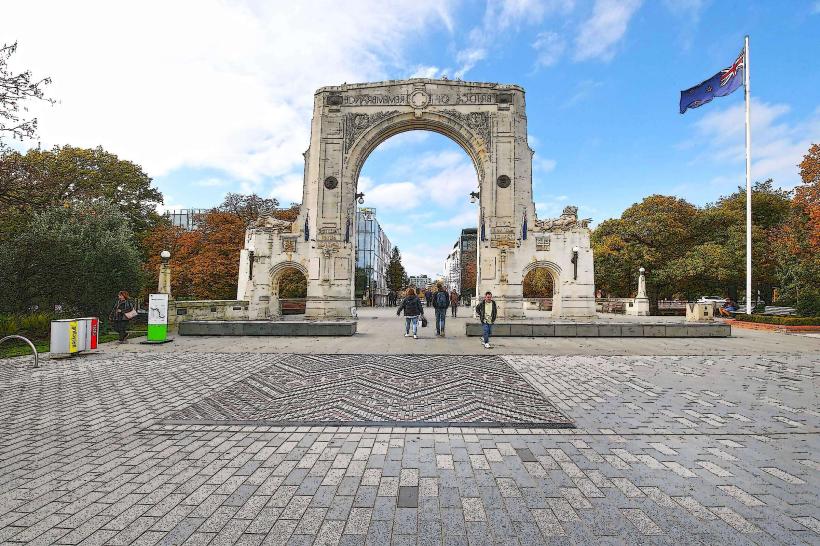Information
Landmark: Christchurch CathedralCity: Christchurch
Country: New Zealand
Continent: Australia
The Christchurch Cathedral, also known as ChristChurch Cathedral, is an iconic landmark in Christchurch, New Zealand. It is a symbol of the city's history, faith, and resilience. The cathedral has witnessed significant events and has been a central part of Christchurch's identity for over a century.
Key Features and History of Christchurch Cathedral:
1. Location and Design
Location: Christchurch Cathedral is located in Cathedral Square, the heart of Christchurch’s central business district. The square is a popular gathering place, and the cathedral stands as a central feature of the city, visible from many parts of the city center.
Architectural Style: The cathedral is designed in the Gothic Revival style, characterized by its pointed arches, ribbed vaults, and flying buttresses. The exterior is constructed of bluestone and brick, giving it a timeless and majestic look. The architecture is inspired by European cathedral designs, particularly those found in England.
Spire: One of the most striking features of Christchurch Cathedral is its central spire, which rises to a height of approximately 63 meters (207 feet). The spire was an important part of the cathedral’s design and was visible from various points around the city, making it an iconic symbol of Christchurch.
2. Historical Significance
Construction and Completion: The construction of Christchurch Cathedral began in 1864, with the foundation stone being laid in 1864 and the building being officially completed in 1904. The cathedral was originally part of the Anglican Diocese of Christchurch and has been a key place of worship and community gathering ever since.
Design by Benjamin Mountfort: The cathedral’s design was created by Benjamin Mountfort, a prominent architect of the time who contributed to the development of many important buildings in New Zealand. Mountfort's design for the cathedral drew inspiration from traditional Gothic cathedrals in Europe, but with a distinctive local twist that reflected the unique characteristics of the Christchurch region.
3. Cultural and Religious Importance
Place of Worship: As the principal church of the Anglican Diocese of Christchurch, the cathedral has served as the center of worship for the city's Anglican community for over a century. It has been the site of numerous services, including those for significant national events, royal visits, weddings, and funerals.
The Christchurch Diocese: The cathedral has been at the heart of the Anglican Church in Christchurch, playing a key role in religious ceremonies and services, including special celebrations like Christmas, Easter, and ANZAC Day. It also serves as a spiritual center for the city, offering support and guidance to the local community.
4. The 2011 Earthquake and the Aftermath
Devastating Earthquake: In February 2011, Christchurch was struck by a devastating magnitude 6.3 earthquake that caused widespread damage throughout the city, including severe damage to Christchurch Cathedral. The earthquake caused the spire to collapse and severely damaged the roof and interior of the building.
Post-Earthquake Damage: After the earthquake, the cathedral was closed to the public due to safety concerns, and extensive efforts were made to assess the damage and consider the future of the building. The damage to the cathedral sparked a nationwide debate over whether to repair the building or replace it with a new structure.
Restoration Efforts: Following the earthquake, there were calls to restore and rebuild the cathedral, but the restoration has been slow due to financial, structural, and logistical challenges. Several proposals have been made, including ideas for a new modern structure or an innovative design that would blend the old with the new. The cathedral's future remains uncertain, with restoration efforts ongoing but hampered by challenges related to funding, building regulations, and community preferences.
5. The Transitional Cathedral
- In the aftermath of the earthquake, a temporary cathedral, known as the Transitional Cathedral or the Cardboard Cathedral, was built to serve the community’s spiritual needs while Christchurch Cathedral was being restored. The Transitional Cathedral is made from cardboard tubing, a unique and innovative design that has become a symbol of the city’s resilience.
6. Role in Tourism and Community Events
Tourist Attraction: Despite the damage caused by the 2011 earthquake, Christchurch Cathedral remains one of Christchurch's most significant tourist attractions. Visitors come to admire the cathedral's architecture, learn about its history, and reflect on its role in the city’s development.
Community Events: The cathedral has hosted numerous community events, concerts, and cultural activities throughout its history. It continues to play a role in public life, hosting services and gatherings to mark important moments in the city’s history.
7. Christchurch Cathedral and the Future
Cultural Symbol: The future of Christchurch Cathedral remains a subject of discussion in the community. As one of the most iconic buildings in New Zealand, the cathedral continues to symbolize Christchurch’s history and resilience in the face of adversity. It represents the city’s ability to rebuild, adapt, and honor its past.
Future Restoration: Efforts to restore and rebuild the cathedral are ongoing, with a focus on preserving the historical integrity of the building while ensuring that it is safe and functional for future generations. The eventual restoration is expected to be a significant cultural and architectural event for Christchurch and New Zealand.
Summary
The Christchurch Cathedral is a historically and culturally important landmark in the city of Christchurch, New Zealand. It was constructed in the Gothic Revival style and has served as the heart of the Anglican faith in Christchurch for over a century. The cathedral played a central role in religious and community life but was heavily damaged in the 2011 earthquake. Restoration efforts have been slow, and the future of the cathedral remains uncertain. Despite the challenges, the cathedral continues to be an enduring symbol of Christchurch’s resilience and determination to rebuild after disaster.

